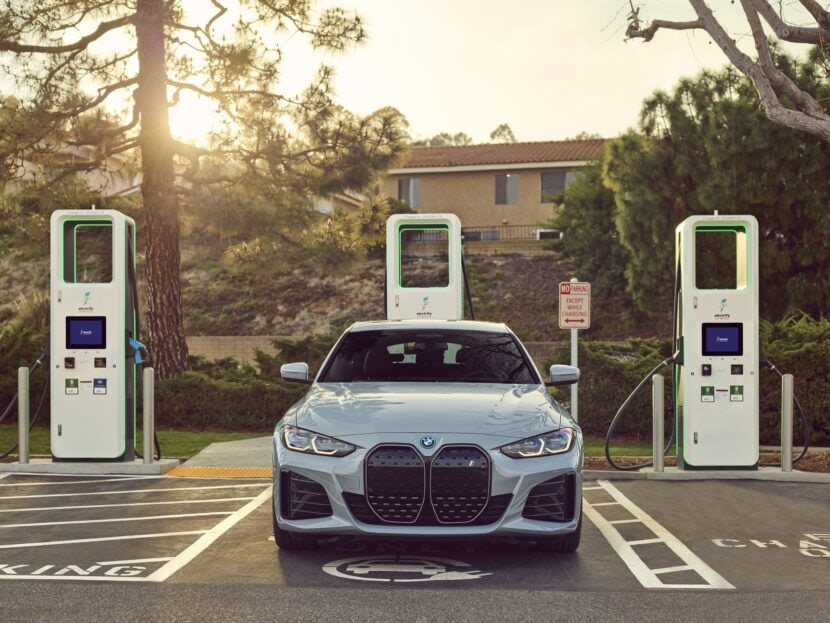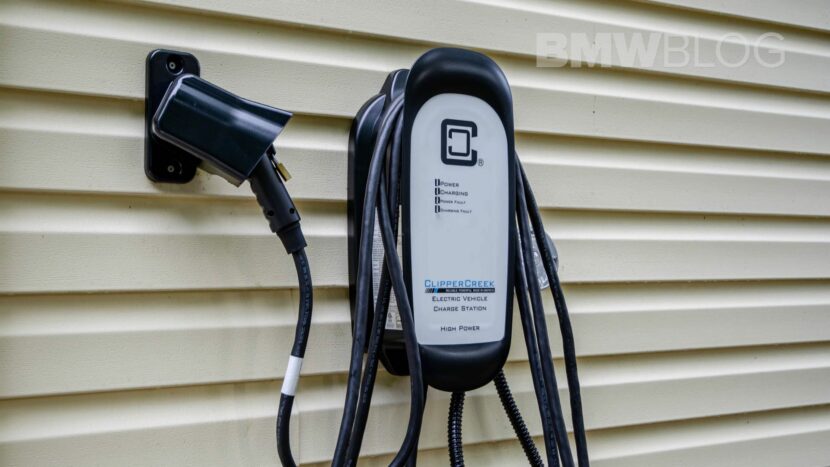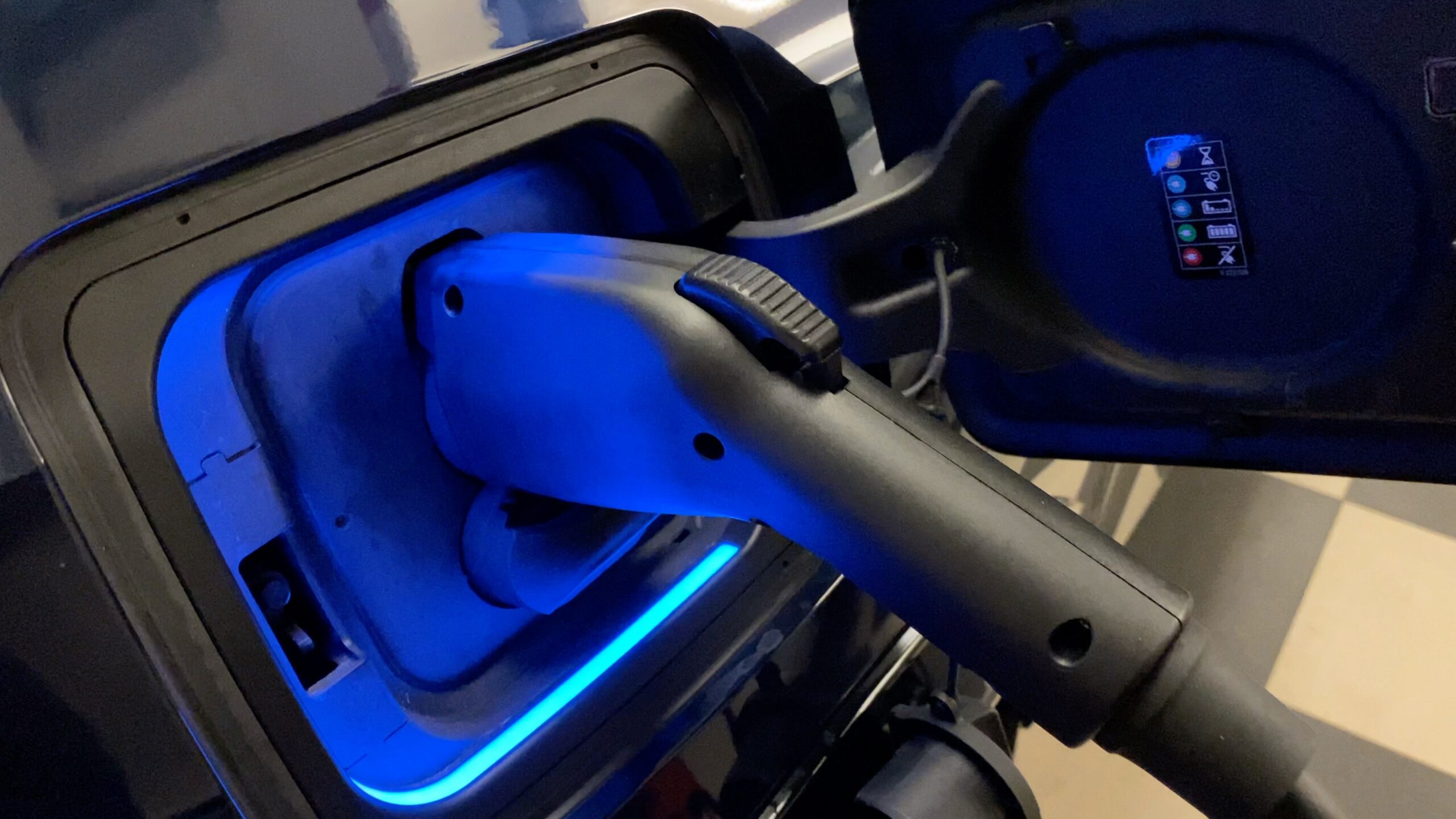This series of EV-related articles is brought to you by ClipperCreek powered by Enphase. ClipperCreek has been a pioneer in the EV charging market since 2006 for Level 2 AC charging stations. You can catch our first article here: Buying Your First BMW EV.
So you’ve finally made the switch over to a fully-electric BMW. Hopefully, you haven’t gotten your new EV home and realized you have no idea what you’re doing, and immediately consulted the Internet for advice. But if that is the case – we’re here to help! Here’s the quick and easy guide to BMW EV charging.

What’s In a Word? Common EV Terminology Explained
One of the most confusing aspects of EV ownership can be simply terminology! Don’t know if your new BMW EV can handle the amps from a DC charger? Well, first, it can – but read on to get a quick rundown of the most commonly thrown around EV terms.
- Amp: the volume at which electricity flows. Higher is better for charging purposes and generally is used interchangeably with the speed at which a charger will charge a given vehicle. Not to be confused with a volt, or voltage, which measures the amount of force the electrons are traveling with (which is largely unimportant for EV ownership).
- DC Charging: Also known as Level 3 Charging, these units utilize DC current instead of AC (which is what we use in our homes) to quickly charge a vehicle. Great for charging on the go in public areas, but it doesn’t scale for home use well…yet.
- kW / kWh: Kilowatts (kW) measure an EV’s power think horsepower. Kilowatt-hour (kWh) measures how much power the battery expends over one hour. Some people prefer to think of kWh as battery size, and though it’s technically inaccurate, it is an effectively reliable measurement.
- Level 1 / 2 / 3 Charging: Level 1 Charging is no longer viable for most EVs, providing single-digit miles per hour of charging. It uses the ubiquitous 120-volt charger found in household outlets. Level 2 Charging is becoming the new standard: it utilizes 240-volt outlets, also found in homes for appliances like central air conditioning units and dryers. But remember: volts aren’t everything! Ensure your vehicle can handle increased amps – Level 2 Charging ranges from 12 to 80 amps – and adjust settings appropriately. Level 3 Charging: see DC Charging.
- SOC/state of charge: current battery level, usually a percentage. A fully drained battery would have a 0% SOC, fully charged would be 100%, etc.
- Volts: the measure of force that drives electrons through a circuit. Not to be confused with amps, which measure volume.
Hopefully, that helps! Now, you’re ready to review your charging options for your new BMW EV.

Charging Options
Charging options for BMW EVs have drastically improved since the first BMW launched the i3 almost a decade ago. Essentially, there are three ways to charge: at home, in public, or at work. There are pros and cons to all of them, and we’ll review them here.
Home Charging
Charging at home is the easiest way to keep your BMW EV charged, but it does require a level of commitment. For one, you’ll need to purchase an at-home charging station. Luckily, that’s more affordable than ever – just a few years ago it was rare to find any options without spending upwards of $2,500. Besides the obvious convenience, it’s helpful to know that if something breaks, you can usually have a neighborhood electrician dispatched and diagnose the problem within 24 hours.
It’s also one of the best ways to live in a two (or more) EV household. Clipper Creek even offers a dual-charging station that’s perfect for the task. You can learn more about it here.
Charging Your BMW EV at Work
Charging at work is a popular option for those that don’t work remotely. There are obvious downsides to this, primarily that it isn’t all that common yet. Another downside includes availability – if there are only three or four chargers but twenty of your coworkers drive EVs…well, do the math. Finally, if something breaks, there’s a lot of equipment checking required in a sprawling company complex (most of the time). It could be a day, week, or month before they restore service. Not ideal. But charging at work can work for some, especially if you have a short commute.
Public Charging
Finally, there’s public charging. Over 53,000 public charging stations exist in the United States (this includes Superchargers). Shocking nobody, over 15,000 of them are in California. But that doesn’t quite tell the whole story. Based on this data from October of 2022, Pennsylvania, with 1,260 charging stations on the map, is firmly in the top ten in the country. Pennsylvania is a big state – roughly 46,055 square miles, in fact. What that means is that a charging station exists – roughly – every 36.5 miles. That’s not accounting for the fact that a city like Harrisburg likely has a few (dozen) more than a city like Scranton. See where I’m going? Imagine driving 36 miles – each way – only to find a non-functioning charger!
As you can understand from the last paragraph, living in a rural area – or even outside of a major city (not in California) makes it challenging to utilize public charging. Like charging at work, you’re also at the mercy of the powers that be that the charging station is even working in the first place.
Preconditioning Your BMW EV and Why It’s Important
Preconditioning is used to refer to two, equally useful tools for an EV. The first, and most common, refers to cooling or warming the cabin in preparation for driving the car. I’m not sure about other brands (I believe Tesla does it too), but BMW EVs combine this with a second function: heating or cooling the battery, preparing it to receive a charge. You can learn more about using it here, and it has a lot of benefits, among them:
- Preconditioning allows for faster charging
- Preconditioning extends battery life by ensuring the battery is charged and an ideal operating temperature
- BMW EVs specifically will allow you to both warm and cool your cabin, as well as the battery
Battery Health Tips
It’s really as simple as thinking about your BMW EV battery the same way you think about your cell phone or digital camera battery. Some quick tips:
- Avoid keeping the batteries at an extreme SOC. Charging all the way up should be reserved for long trips, and the vehicle should never remain at a 0% charge. Extremely high or low state-of-charge stresses battery components and will (on a long enough timeline) reduce battery longevity.
- Always precondition as this ensures the battery is operating at its ideal temperature. Similarly, avoid the battery’s exposure to extremely high or extremely low temperatures.
- DC charging isn’t meant to be an everyday thing. Don’t overdo it: over the long term, it will impact battery health. Level 2 is safe, reliable, and fast enough for most uses. That said; you have no reason to worry about occasional DC charging, so enjoy it when you can.







































































